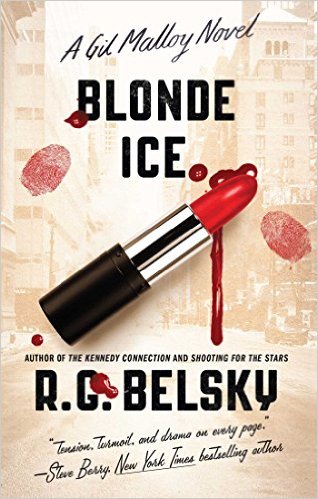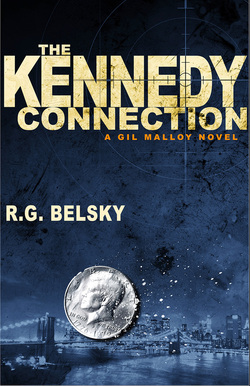
Opening Credits
THE RULES ACCORDING TO CLARE
I always tell the same story to the new reporters on their first day.
It goes like this: Two guys are sitting in a bar bragging about their sexual exploits. As they get drunker and drunker, the conversation becomes more outrageous about how far they’d be willing to go. Would you ever have sex with an animal, one of them asks? Of course not, the other guy replies angrily. What if someone paid you $50 to do it with a dog? That’s ridiculous, he says. How about $500? Same answer. Okay, the first guy says to him, would you have sex with a dog for $5,000? The other guy thinks about that for a while, then asks: “What breed?”
The point here is that once you ask the question “what breed?” you’ve already crossed over a very important line and can never go back.
It’s based, I suppose, on the famous old Winston Churchill story. They say Churchill was seated at a dinner party next to a very elegant and beautiful lady. During the meal, he turned to her and asked if she’d be willing to have sex with him if he gave her $1 million. The woman laughed and said sure. Then he asked if she’d have sex with him for $25. “Of course not, what do you think I am?” the indignant woman replied. To which Churchill told her, “Madame, we’ve already established what you are. Now we’re just haggling over the price.”
This is a crucial concept in the news business where I work. Because there is no gray area for a journalist when it comes to honesty and integrity and moral standards. You can’t be just a little bit immoral or a little bit dishonest or a little bit corrupt. There is no compromise possible here.
Sometimes I tell a variation of the dog story.
I call it the Woodstein Maneuver.
The idea is to come up with a new scenario for the Watergate scandal. To speculate on what might have happened if Bob Woodward and Carl Bernstein (“Woodstein!” in the Robert Redford-Dustin Hoffman movie) had not written their stories which led to Richard Nixon’s ouster, but instead gotten hush money to cover up the scandal. What if Nixon had paid them to make it all go away?
I ask a new reporter to put themselves in Woodward and Bernstein’s place and think about what they would do if offered such a bribe.
Most of them immediately say they would never take money under any circumstances to compromise a story. I’m not sure if they do because they really mean this or simply say it because they believe it’s the answer I want to hear. A few laughingly say they’d go for the money, but I’m not sure I believe them either. I figure they’re just trying to be outrageous or different.
Only a few reporters ask the key question.
The “what breed?” question.
“How much money?” they want to know.
Those are the ones I worry about the most.
THE RULES ACCORDING TO CLARE
I always tell the same story to the new reporters on their first day.
It goes like this: Two guys are sitting in a bar bragging about their sexual exploits. As they get drunker and drunker, the conversation becomes more outrageous about how far they’d be willing to go. Would you ever have sex with an animal, one of them asks? Of course not, the other guy replies angrily. What if someone paid you $50 to do it with a dog? That’s ridiculous, he says. How about $500? Same answer. Okay, the first guy says to him, would you have sex with a dog for $5,000? The other guy thinks about that for a while, then asks: “What breed?”
The point here is that once you ask the question “what breed?” you’ve already crossed over a very important line and can never go back.
It’s based, I suppose, on the famous old Winston Churchill story. They say Churchill was seated at a dinner party next to a very elegant and beautiful lady. During the meal, he turned to her and asked if she’d be willing to have sex with him if he gave her $1 million. The woman laughed and said sure. Then he asked if she’d have sex with him for $25. “Of course not, what do you think I am?” the indignant woman replied. To which Churchill told her, “Madame, we’ve already established what you are. Now we’re just haggling over the price.”
This is a crucial concept in the news business where I work. Because there is no gray area for a journalist when it comes to honesty and integrity and moral standards. You can’t be just a little bit immoral or a little bit dishonest or a little bit corrupt. There is no compromise possible here.
Sometimes I tell a variation of the dog story.
I call it the Woodstein Maneuver.
The idea is to come up with a new scenario for the Watergate scandal. To speculate on what might have happened if Bob Woodward and Carl Bernstein (“Woodstein!” in the Robert Redford-Dustin Hoffman movie) had not written their stories which led to Richard Nixon’s ouster, but instead gotten hush money to cover up the scandal. What if Nixon had paid them to make it all go away?
I ask a new reporter to put themselves in Woodward and Bernstein’s place and think about what they would do if offered such a bribe.
Most of them immediately say they would never take money under any circumstances to compromise a story. I’m not sure if they do because they really mean this or simply say it because they believe it’s the answer I want to hear. A few laughingly say they’d go for the money, but I’m not sure I believe them either. I figure they’re just trying to be outrageous or different.
Only a few reporters ask the key question.
The “what breed?” question.
“How much money?” they want to know.
Those are the ones I worry about the most.









 RSS Feed
RSS Feed